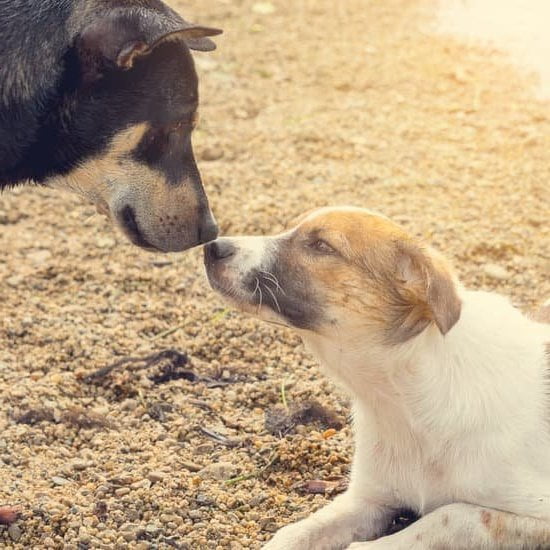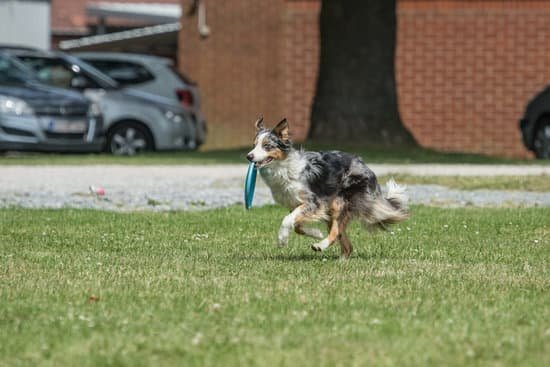Introduction
Service dogs provide companionship and emotional support to those who need it most. Whether it’s help getting around, providing support during medical emergencies or just being there as a comforting presence, service dogs can make life much easier for people with disabilities or special needs. However, before you can start harnessing the power of service dogs, you need to consider various factors such as training methods and commitment levels.
Training: Training a service dog is no easy feat, but with patience and dedication it can be done. First, you will have to decide what type of service work your dog will do. Will they be helping someone with physical impairments? Or may be providing emotional support? Based on this assessment, you’ll have to choose which commands your dog should learn in order to perform its job efficiently. In addition to basic obedience skills such as “sit” or “stay”, certain tasks such as retrieving items from another room or pushing buttons may be necessary for certain types of assistance depending on their individualized needs. Once you determine the command list for your service dog in training, remember repetition is key in building up your dog’s recollection of the commands so that they are always ready whenever needed.
Health Requirements: You also want your potential service dog candidate to stay healthy throughout their career as a working animal. Thus, regular and timely trips to the vet are essential so that any health issues or illnesses which arise can be identified and treated quickly. Furthermore, establishing a nutrition regimen for your pup is also important in order to ensure that they stay active and fit enough to keep up with their job demands throughout the years.
Socialization: Socializing a service pup correctly is also crucial when planning out their future career plans since part of their job involves interacting closely with other people in various settings; therefore they must learn how to behave properly while encountering new faces and situations. One way that you could help socialize them would be setting aside time where they face different stimuli such reading books together, visiting parks at off hours when there won’t be many strangers around or simply playing regularly at home with multiple family members and guests so that they get comfortable around unfamiliar people quickly.
Conclusion: Ultimately we think all the effort put into grooming a service pup for their career path will most definitely result in their success given sufficient time commitment from both owner and pet alike!
What is a Service Dog and the Different Types Available
A service dog is a specially trained, highly skilled canine that performs tasks and activities to assist individuals with disabilities. These dogs can be trained to help people with a variety of physical, mental, or emotional disabilities and can add greatly to a person’s independence, confidence, and self-esteem. Service dogs assist their human partners in everyday activities such as retrieving items, guiding them through crowds, alerting owners to specific sounds or recognizing if physical symptoms are beginning—or any other essential task related to their owner’s disability.
There are many different types of service dogs available. Generally most are divided into two categories; those that provide physical assistance and those that provide psychological/behavioral assistance. Physical assistance may include things like balance support for people with weakened limbs or mobility issues; carrying objects such as groceries for someone who is unable to lift them; providing assistance opening doors for somebody in a wheelchair; or helping hearing impaired owners navigate their environment by alerting them to sounds. Behavioral/psychological assistants come in many forms—for example, one type of psychiatric service dog might assist its owner with anxiety or panic attacks by providing calming pressure against the body when needed. Other behavioral service dogs might provide deep pressure therapy (similarly like weighted blankets) for those with PTSD or autism; provide an anchor for Veterans experiencing flashbacks or symptoms of disorientation due to war-related trauma; identify possible medical triggers for epilepsy sufferers; intervene during psychologically triggered tense moments between a caregiver and patient; provide tactile stimulation that soothes autistic patients who get overwhelmed in crowded/noisy environments; monitor blood sugar levels in diabetics…and many more!
Understanding Your Legal Rights in Obtaining a Service Dog
The Americans with Disabilities Act (ADA) provides legal protection for people with disabilities who require assistance from a service animal. If you are considering obtaining a service dog, it is important to first understand your rights under the ADA and the regulations that surround the use of service animals.
Under the ADA, individuals with disabilities have access to all public places, accommodations, transportation services, recreational programs, educational programs and employment opportunities equal to those enjoyed by individuals without disabilities. This includes access to public areas that would otherwise be limited or prohibited for a pet dog or other non-service animal. As long as a service animal is needed to help mitigate its handler’s disability, it should be allowed entry into any public area or accommodation.
This also applies in cases where service animals-in-training must accompany its handler anywhere general public access is available. The ADA does not require these training dogs to be certified as of yet, but handlers may need to show proof that their dog is currently enrolled in an accredited training program or has successfully completed a certified course in order to have it protected from burdensome regulations and policies that would generally equate it being regarded as just another pet dog instead of an actual working canine companion providing genuine assistance.
It is important to note that when traveling with a service dog-in-training on airplanes within the U.S., Federal Law requires airlines provide generous accommodations if asked. For instance, trained service dogs often fly with their handlers free and they would not be required to keep them confined within airline provided crates while traveling.
Choosing the Right Size and Breed for Your Service Dog
When selecting a size and breed for your service dog, you’ll want to consider factors such as the type of service work you plan on having your dog perform and the amount of space you have available for your dog. Smaller dogs are usually better for tasks like comfort or therapy work that don’t require too much physical assistance; larger dogs tend to be better suited for tasks that require more of a physical presence or assistance such as balance support and mobility assistance. Some breeds may be more inclined than others to suit a particular job, so research is important in this process. For example, Labrador Retrievers tend to be an excellent breed choice for service and assistance jobs due to their intelligence, calm disposition, trainability and keen awareness skills. Make sure to speak with an experienced professional about what breed would best suit your needs and expectations.
Essential Training Steps
Potty Training: Potty or housetraining your dog should be your first priority. To potty train a puppy, begin by establishing an area outdoors where you and your pup can go for regular breaks during the day. Check the designated area at least every 30 minutes and reward your pup with treats if they use the area to do their business. If they make a mistake within the house, clean up the mess with an enzymatic cleaner as soon as possible to prevent re-marking behaviors.
Crate Training: Crate training is recommended for all service dogs. A crate provides structure and security while giving your dog a safe place to retreat from any environment that may be overwhelming or scary. Start with short crate periods of 10-15 minutes and increase duration over time once your pup is comfortable with it. When putting them in the crate, remember to provide enough positive reinforcement that they don’t fear it. Make sure to never use the crate as a punishment or scolding spot — this could lead to serious behavioral problems down the line.
Basic Obedience: Begin obedience training as early in a pup’s life as possible; it will help speed up learning later on when more complex commands are introduced. Practice basic commands such as “sit,” “stay,” “down,” and others using positive reinforcement techniques like providing praise or treats when good behavior is achieved. You can even practice these commands in different environments under distraction so your pup can become familiar with following instructions no matter what situation they find themselves in.
Advanced Training
Once the basic training has been completed, the next step in teaching your pup to become a service dog is to enroll them in enrichment exercises. Enrichment exercises are activities and games that challenge your pup mentally and physically. Examples of enrichment exercises include scent puzzles, nose work, obedience drills, tracking and retrieval drills. These activities help to strengthen both your pup’s focus and problem-solving skills.
Public access commands are taught so that your service dog can be comfortable performing tasks while in public. These commands help keep them calm while they are in unfamiliar environments. Common public access commands include “wait,” “leave it,” and “settle.” During this time, you should practice basic obedience such as sit/stay, walking on leash without pulling or distractions, coming when called and responding quickly to cues no matter where you are or who you’re with.
Finally, task training comes into play during this stage; this is when you teach your pup specific tasks related to the job at hand. This could include alerting for seizures or recognizing changes related to mental health disorders like PTSD or Anxiety ––specific behaviors will depend on why the pup was originally trained for service animal access (for example managing a disability). As an experienced handler, you should already have familiarity with common tasks that fall within these areas of expertise but if not then it may be best to seek professional guidance from a certified trainer who can outline realistic expectations as well as provide personalized coaching along the way.
Socialization
The most important aspect of training your dog to become a service pet is socialization. Socializing your dog is essential to ensuring that it will be able to interact well with other dogs, people, and various situations. To do this, you can introduce them to plenty of new scenarios such as visiting the vet or taking them on car rides and new walks. When encountering strangers or other animals, make sure there is ample time for sniffing and saying ‘hello’. Consider enrolling in obedience training classes with both you and your dog as having a respectful leader will help build good habits early on. Additionally, have positive reinforcements on hand such as treats and verbal acknowledgments when they do well. This will ensure they are eager to learn more and form valid connections between their actions and rewards while instilling in them the importance of being treated fairly by others around them. Lastly, you should create an environment where mistakes are forgiven and love is abundant as those are the qualities of a good leader of which a service animal should strive for excellence towards.
Final Stages
When your dog has completed its basic training, the next step is to begin testing them for service dog certification. If you haven’t already done so, it would be helpful to locate one or more qualified evaluators in your area who can observe the dog and judge whether or not they are capable of meeting the American Kennel Club (AKC) standard for service dogs. Generally, this includes a pass/fail test of their physical abilities including balance and agility tests, as well as demonstrating their knowledge of commands learned during training.
Once your dog passes the testing phase, they must then complete various certifications required by most public organizations, such as proof of valid vaccinations, spay/neuter certificate, and additional health screenings. Be sure to keep all paperwork related to these processes on hand for future use. Finally, depending on state regulations and local laws, you may need to register with a particular organization in order to be legally allowed to bring your dog with you in public spaces. A qualified expert should be able to provide you with guidance regarding how best to go about doing this.
Giving Back
Training a service dog is no small feat. It requires significant dedication, patience, and hard work. Before beginning the training process, it is important to ensure that your pup has the right temperament to handle such an extraordinary responsibility. Consider their energy level, intelligence, amusement to new tasks and people, ability to obey commands easily, health history and overall temperament.
Once you have evaluated your pup’s potential for being a service dog, consider organizations in needs of a trained service dog. These include non-profits and hospitals that provide services for individuals with disabilities as well as veterans’ assistance programs. Contact these organizations to see what type of assistance they need from a service dog. Most organizations will set out criteria for owning one of their dogs e.g., home visits prior adoption and some may even provide funding for the training program in return for allowing them access to the completed trained dog after training is finished.
In addition to contact potential organizations who might use your canine friend’s services, do lots of research into where and how you can hone your own skills as a trainer. You may find online sources such as articles or webinars discussing various techniques or find local classes or seminars with professional trainers who provide hands-on help.
While there’s no easy road when it comes to training a successful service dog, the rewarding process will be worth the effort you expend during the journey. Finding reputable sources will enable you to give back by providing vital aid necessary in many areas helping enhance everyone’s quality of life including your own!
Conclusion
Training a service dog takes commitment, patience, and hard work. It is important to consult with a professional before beginning this process, as they can provide guidance on how best to train your dog to be a successful service animal. Working together, you and your pup can unlock new possibilities and fulfillment. With the right combination of care, exercise, education, and love, your dog will feel ready to handle most things life throws at them! You will gain an invaluable companion whose devotion knows no limits. By giving that level of trust and support back in return, you will develop an unshakeable bond with your own personal super-hero — and experience the heavenly sense of joy that comes from owning an amazing service animal!

Welcome to the blog! I am a professional dog trainer and have been working with dogs for many years. In this blog, I will be discussing various topics related to dog training, including tips, tricks, and advice. I hope you find this information helpful and informative. Thanks for reading!





